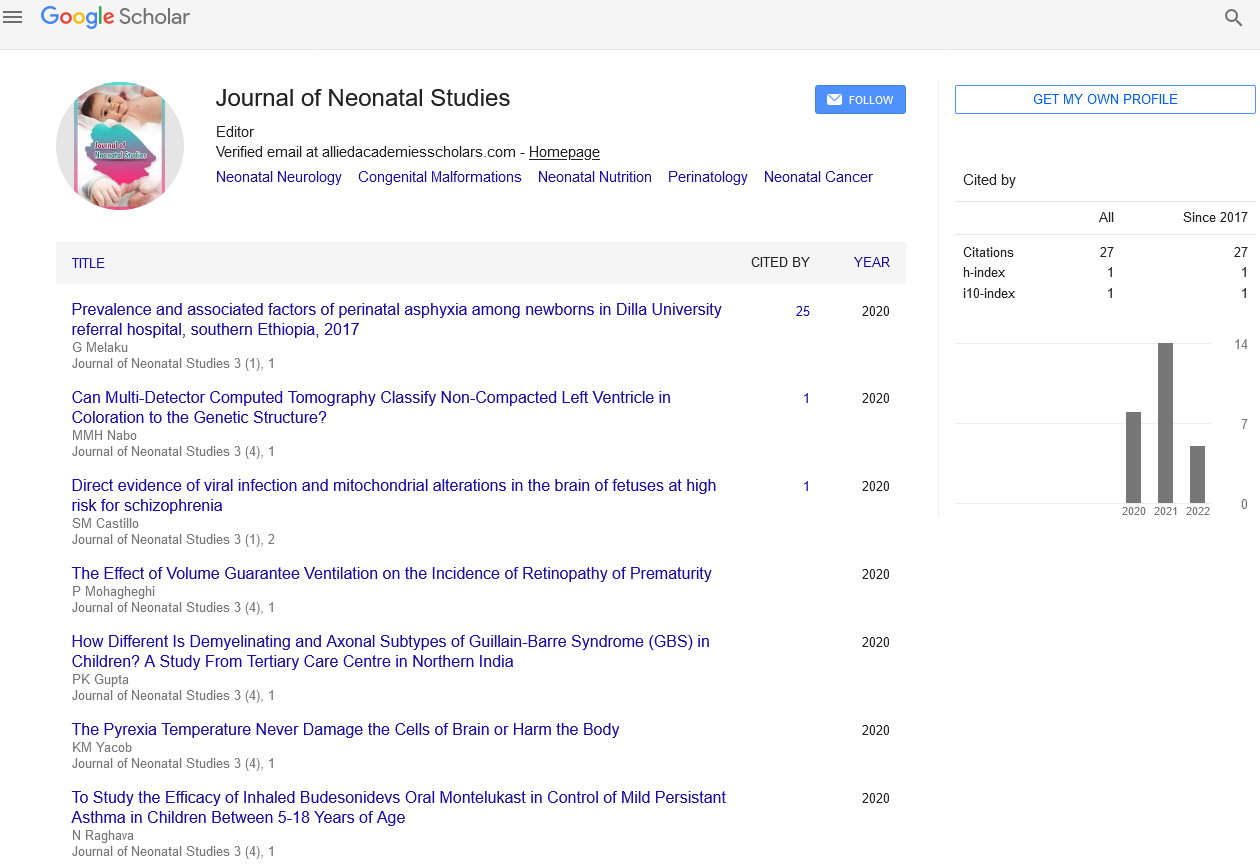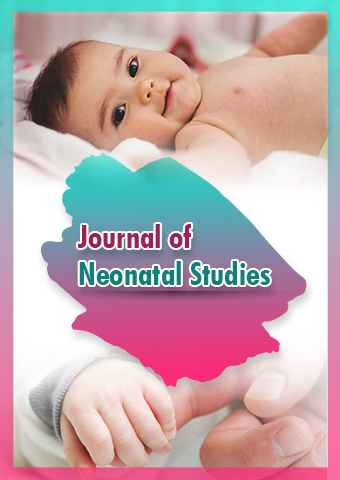Perspective - Journal of Neonatal Studies (2024) Volume 7, Issue 5
Vitamin K Deficiency Bleeding in Neonates: Understanding, Prevention, and Management
- Corresponding Author:
- Mark Anthony
Department of Pediatrics, Emory University, USA
E-mail: markant06@emory.edu
Received: 02-Sep-2024, Manuscript No. JNS-24-150531; Editor assigned: 04-Sep-2024, PreQC No. JNS-24-150531 (PQ); Reviewed: 18-Sep-2024, QC No. JNS-24-150531; Revised: 23-Oct-2024, Manuscript No. JNS-24-150531 (R); Published: 30-Oct-2024, DOI: 10.37532/JNS.2024.7(5).270-272
Introduction
Vitamin K Deficiency Bleeding (VKDB), formerly known as hemorrhagic disease of the newborn, is a serious condition that affects neonates and can lead to severe bleeding due to a deficiency of vitamin K. This essential nutrient is crucial for blood clotting, and its deficiency in newborns can result in life-threatening hemorrhages. This article delves into the causes, symptoms, diagnosis, prevention, and management of VKDB, emphasizing the importance of vitamin K administration at birth.
Description
Assessment and monitoring
What is vitamin K?
Vitamin K is a fat-soluble vitamin essential for the synthesis of certain proteins required for blood clotting (coagulation) and bone metabolism. There are two main forms of vitamin K: K1 (Phylloquinone) found in green leafy vegetables, and K2 (Menaquinone) produced by bacteria in the human gut. In adults and older children, dietary intake and gut bacteria provide sufficient vitamin K. However, newborns have limited vitamin K stores at birth.
Causes of vitamin K deficiency in newborns
Several factors contribute to vitamin K deficiency in neonates:
Low vitamin K stores: Newborns have low stores of vitamin K at birth because it does not cross the placenta efficiently during pregnancy.
Sterile gut: Newborns are born with a sterile gut, meaning they lack the gut bacteria that produce vitamin K2. It takes time for these bacteria to colonize the intestines after birth.
Breastfeeding: Breast milk contains lower levels of vitamin K compared to formula milk. Exclusively breastfed infants are at higher risk of developing VKDB if not supplemented with vitamin K.
Maternal medications: Certain medications taken by the mother during pregnancy, such as anticonvulsants and anticoagulants, can interfere with vitamin K metabolism and increase the risk of VKDB in the newborn.
Types of vitamin K deficiency bleeding
VKDB can be classified into three types based on the timing of symptom onset:
Early VKDB: Occurs within the first 24 hours of life. It is rare and often associated with maternal medications that affect vitamin K metabolism.
Classical VKDB: Occurs between 1 to 7 days of life. It is the most common type and is associated with the natural low vitamin K stores in newborns.
Late VKDB: Occurs between 2 to 12 weeks of life, but can occur up to 6 months. It is associated with exclusively breastfed infants who did not receive vitamin K prophylaxis at birth. Late VKDB is particularly dangerous as it can lead to severe intracranial bleeding.
Symptoms of VKDB
The symptoms of VKDB depend on the severity and location of the bleeding. Common signs include:
Bruising: Unexplained bruising on the skin, especially around the face and head.
Bleeding from mucous membranes: Bleeding from the nose, mouth, and umbilical stump.
Gastrointestinal bleeding: Blood in the stool or vomit.
Intracranial hemorrhage: Signs of intracranial bleeding include irritability, seizures, lethargy, and a bulging fontanel (the soft spot on the baby’s head).
Bleeding from injection sites: Prolonged bleeding or oozing from sites where injections or heel pricks were administered.
Diagnosis of VKDB
Diagnosing VKDB involves a combination of clinical evaluation and laboratory tests:
Clinical assessment: Observing the newborn for signs of bleeding and bruising, and taking a detailed medical history, including maternal medications.
Laboratory tests: Blood tests to measure coagulation parameters such as Prothrombin Time (PT) and activated Partial Thromboplastin Time (aPTT). These tests assess the blood’s ability to clot and can help identify a deficiency in vitamin K-dependent clotting factors.
Imaging studies: In cases of suspected intracranial hemorrhage, imaging studies such as ultrasound or MRI may be performed to detect bleeding in the brain.
Prevention of VKDB
The most effective way to prevent VKDB is through the administration of vitamin K at birth. Guidelines and recommendations for vitamin K prophylaxis include:
Intramuscular injection: The American Academy of Pediatrics (AAP) and other health organizations recommend a single Intramuscular (IM) injection of 1 mg of vitamin K1 (Phylloquinone) for all newborns shortly after birth. This method is highly effective in preventing all forms of VKDB.
Oral vitamin K: In some countries, oral vitamin K is used as an alternative to the IM injection. While oral administration is less invasive, it may require multiple doses to achieve the same level of protection as the IM injection. Oral vitamin K is usually given in three doses: at birth, at one week, and at one month of age.
Management and treatment of VKDB
If VKDB is suspected or diagnosed, prompt treatment is essential to prevent severe complications. Treatment options include:
Vitamin K administration: Immediate administration of vitamin K can help restore normal blood clotting. This can be given intramuscularly or intravenously, depending on the severity of the bleeding.
Blood transfusions: In cases of severe bleeding, blood transfusions may be necessary to replace lost blood and improve the baby’s clotting ability.
Supportive care: Managing any complications arising from the bleeding, such as intracranial hemorrhage, and providing supportive care to stabilize the newborn.
Importance of vitamin K prophylaxis
Despite the effectiveness of vitamin K prophylaxis in preventing VKDB, some parents may decline the injection due to concerns about safety or preference for natural alternatives. It is essential for healthcare providers to educate parents about the risks of VKDB and the benefits of vitamin K administration. Addressing any misconceptions and providing evidence-based information can help parents make informed decisions about their newborn’s health.
Case studies and success stories
Several case studies highlight the importance of vitamin K prophylaxis in preventing VKDB:
Case study 1: A full-term, exclusively breastfed infant who did not receive vitamin K prophylaxis presented with severe intracranial hemorrhage at 3 weeks of age. Despite prompt medical intervention, the baby suffered long-term neurological damage. This case underscores the critical need for vitamin K administration at birth.
Case study 2: A preterm infant born at 32 weeks’ gestation received a vitamin K injection shortly after birth. The baby developed mild bruising due to prematurity but did not experience any severe bleeding episodes. The prophylactic vitamin K helped prevent VKDB, allowing the baby to thrive.
Research and future directions
Ongoing research aims to improve our understanding of VKDB and explore new approaches to prevention and treatment. Some areas of focus include:
Alternative prophylaxis methods: Investigating the efficacy and safety of different routes of vitamin K administration, such as subcutaneous injections or newer oral formulations, to provide effective prophylaxis with fewer doses.
Genetic factors: Studying genetic variations that may predispose certain infants to VKDB and identifying biomarkers for early detection and targeted prophylaxis.
Global health initiatives: Promoting awareness and implementation of vitamin K prophylaxis programs in low-resource settings to reduce the global burden of VKDB.
Conclusion
Neonatal nursing is a specialized field dedicated to providing comprehensive care for newborn infants during their initial days of life. This crucial period requires skilled nursing intervention to support the transition from intrauterine to extrauterine life and promote the health and well-being of neonates. In this article, we will explore essential nursing guidelines for neonates, covering various aspects of care, from assessment and monitoring to feeding and developmental support.

